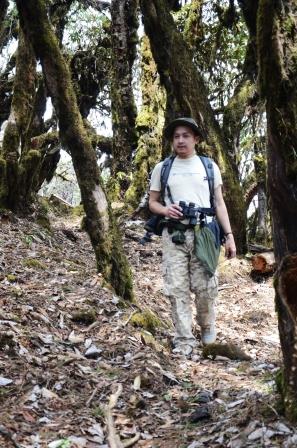News
Celebrating a Panther amongst the Clouds, David Macdonald reports on the success of Ugyen Penjor
Celebrating a Panther amongst the Clouds, David Macdonald reports on the success of Ugyen Penjor: two years ago, we were thrilled when several WildCRU Panthers secured Distinctions in our Diploma course, and amongst them was our Bhutanese scholar, Ugyen, who seemed set for international recognition. Back in Bhutan, Ugyen has made a name for himself working with the Department of Forests and Park Services, meanwhile developing a collaboration within WildCRU’s clouded leopard programme. Working closely with his former tutor, Dr Cedric Tan, the results of this collaboration have just appeared in a remarkable analysis of clouded leopard distribution in Bhutan.
Bhutan is a mountainous kingdom, and we were excited to record clouded leopards at an altitude of 3600m. Ugyen led us in analysing camera trap data from 849 paired stations operated March 2014 and March 2015. This first quantitative study of clouded leopards in Bhutan revealed that their habitat use was positively influenced by increasing forest cover and farther away from settlements and large rivers. Surprisingly, elevation was negatively association with habitat use, probably because mountains in Bhutan are so high.
Clouded leopards turn out to be rare in Bhutan, with an overall population density estimate of 0.40 per 100 km2, a country where the Constitution mandates 60% forest cover in perpetuity, and which gazettes more than 50% of the total land areas as protected. For the more technically minded, our paper compares occupancy estimates from maximum-likelihood and Bayesian modelling frameworks. The Bayesian model includes correction for spatial autocorrelation and also accounts for heterogeneity in detection probability. There was a huge difference between maximum-likelihood (non-spatial) and Bayesian (spatial) estimates, and we used the spatial model to prepare a predictive habitat use map of clouded leopard throughout Bhutan. With this mapping, we identified many areas outside of protected areas as suitable for the clouded leopard, in hope that they will gain some protection for conserving this species.







